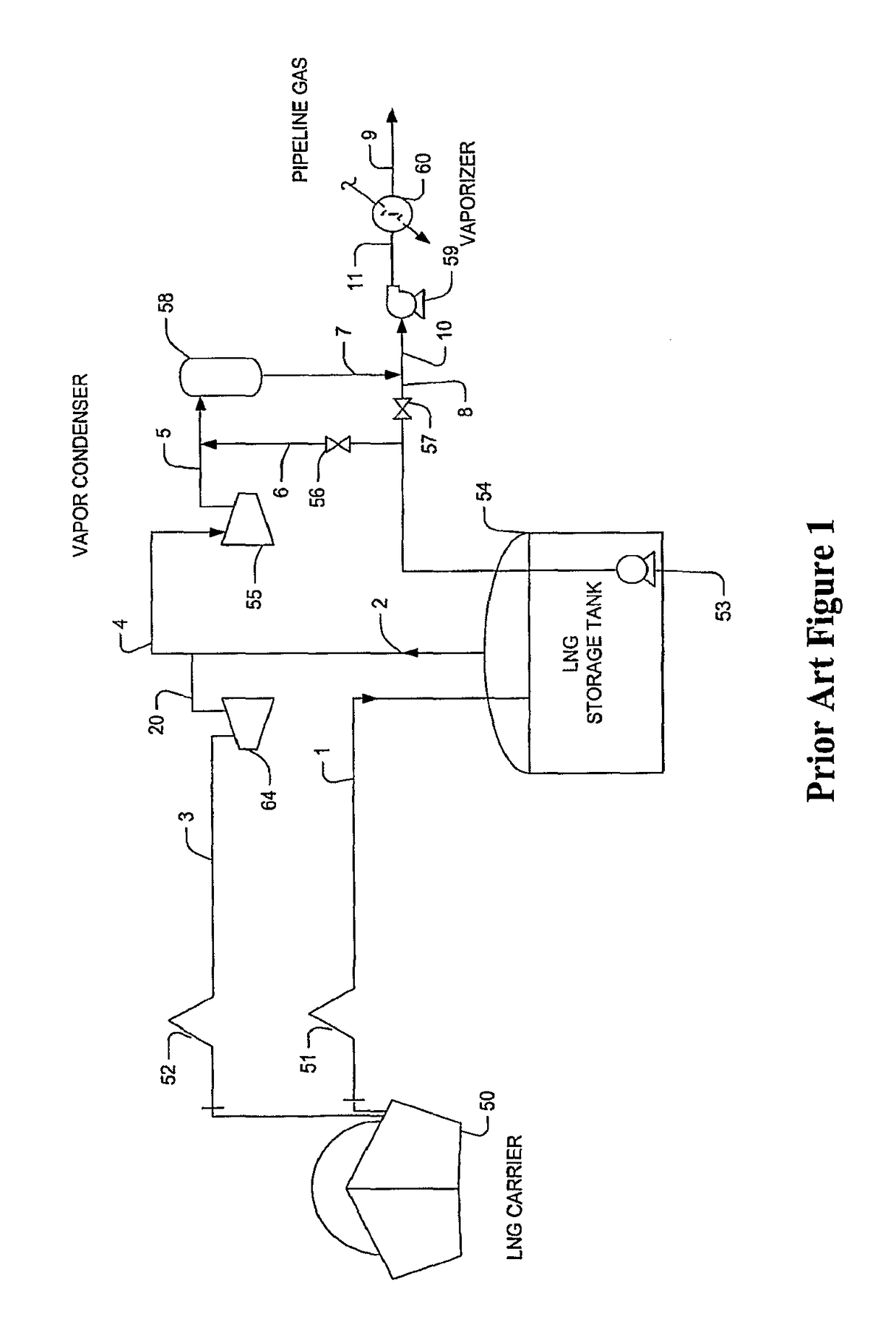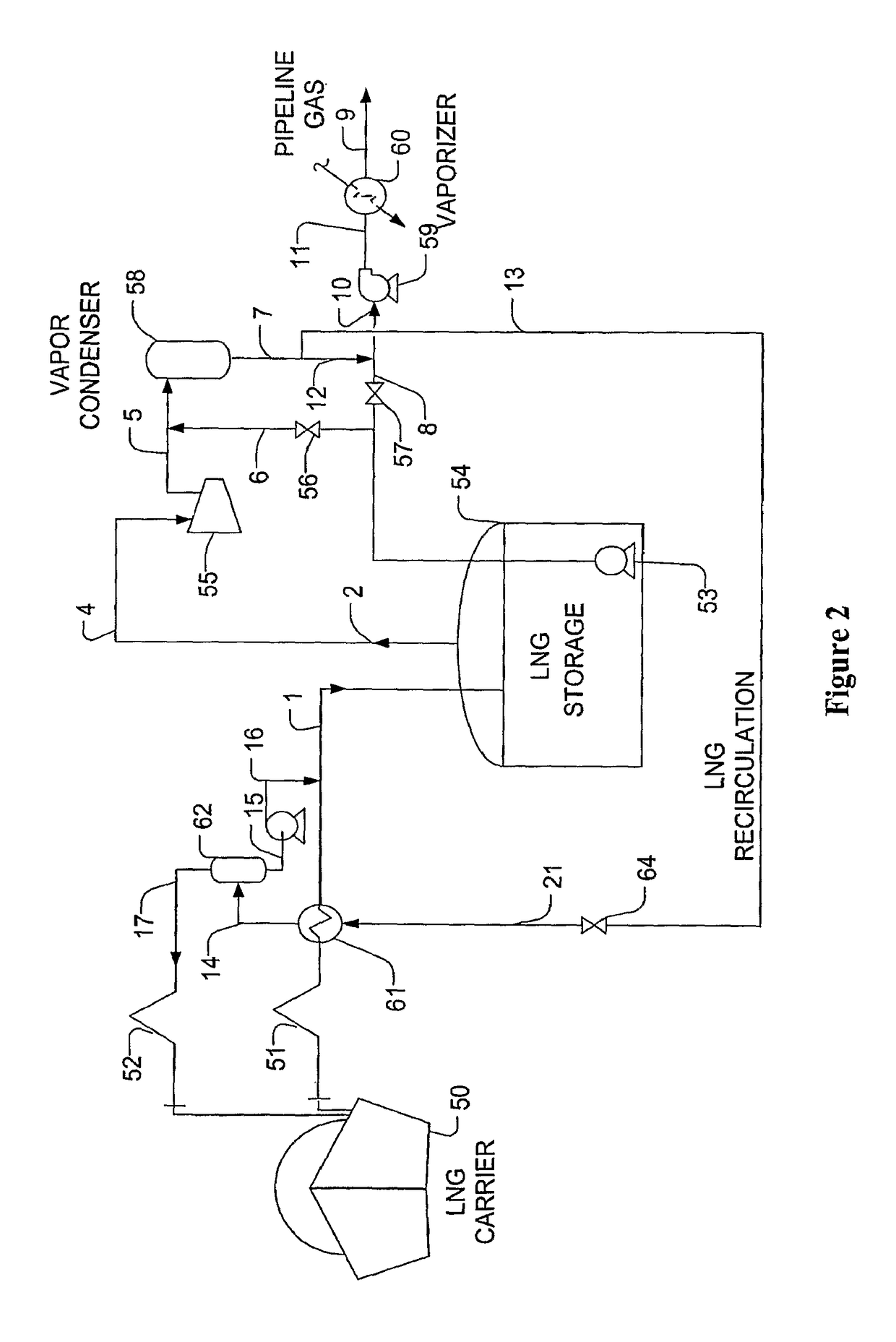LNG vapor handling configurations and methods
a technology of lng vapor and configuration, applied in the direction of load accommodation, container discharge methods, lighting and heating apparatus, etc., can solve the problems of significant cost to the lng receiving terminal, large amount of lng vapor that must be further processed, and significant problems to maintain lng in the transfer line, so as to reduce the boil-off volume
- Summary
- Abstract
- Description
- Claims
- Application Information
AI Technical Summary
Benefits of technology
Problems solved by technology
Method used
Image
Examples
Embodiment Construction
[0018]The present invention is directed to various configurations and methods for an LNG receiving terminal in which sendout LNG liquid from a storage tank is employed as refrigerant to subcool LNG that is being unloaded. Using such configurations, it should be noted that vapor generation from the tank is reduced to a significant degree and that the vapor return compressor and the return line to the LNG carriers of heretofore known configurations can be eliminated. It should still further be appreciated that the circulation line and pump system for the sendout LNG liquid can be advantageously used during normal holding operation, which will maintain the LNG transfer line at cryogenic temperature.
[0019]Most preferably, LNG is provided from an LNG carrier vessel or other remote source using conventional LNG transfer lines and one or more pumps to a conventional LNG storage tank that is fluidly coupled to a boil-off compressor and vapor condenser or absorber. The vapor condenser or abs...
PUM
 Login to View More
Login to View More Abstract
Description
Claims
Application Information
 Login to View More
Login to View More - R&D
- Intellectual Property
- Life Sciences
- Materials
- Tech Scout
- Unparalleled Data Quality
- Higher Quality Content
- 60% Fewer Hallucinations
Browse by: Latest US Patents, China's latest patents, Technical Efficacy Thesaurus, Application Domain, Technology Topic, Popular Technical Reports.
© 2025 PatSnap. All rights reserved.Legal|Privacy policy|Modern Slavery Act Transparency Statement|Sitemap|About US| Contact US: help@patsnap.com


